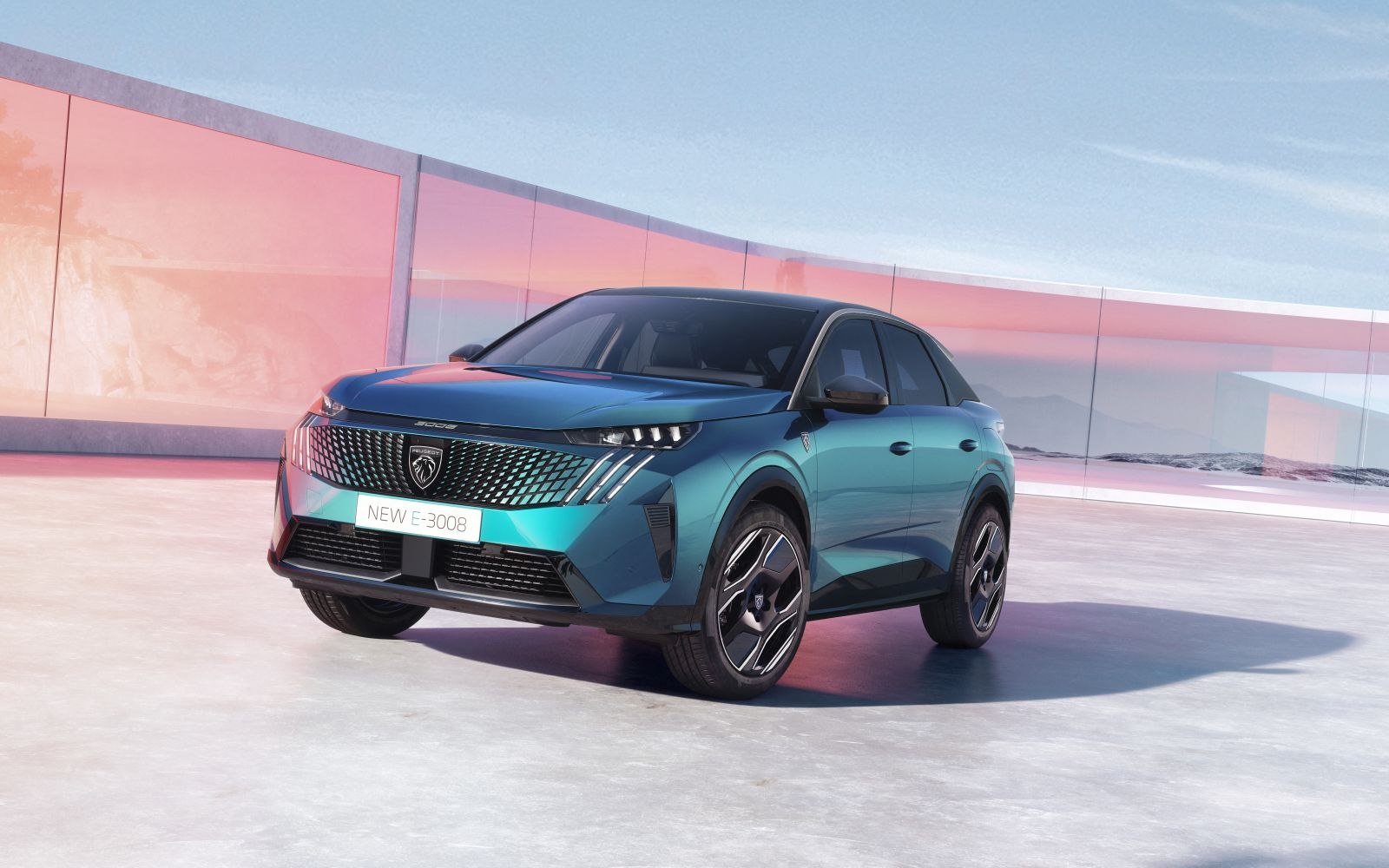2023 Peugeot 3008 III (Phase I, 2023) e-3008 73 kWh (326 Hp) Dual Motor AWD | Specifications





























































































| Acceleration 0 - 100 km/h | 6.4 sec |
| Acceleration 0 - 60 mph | 6.1 sec |
| Acceleration 0 - 62 mph | 6.4 sec |
| Fuel Type | Electricity |
| Maximum speed | 180 km/h |
| Weight-to-power ratio | 6.7 kg/Hp, 148.2 Hp/tonne |
Drivetrain, brakes and suspension specs
| Assisting systems | ABS (Anti-lock braking system) |
| Drive wheel | All wheel drive (4x4) |
| Drivetrain Architecture | One electric motor drives the front wheels, one electric motor drives the rear wheels. |
| Front brakes | Ventilated discs, 365x37 mm |
| Front suspension | Coil spring, Independent type McPherson |
| Number of gears and type of gearbox | 1 gears, automatic transmission |
| Power steering | Electric Steering |
| Rear brakes | Ventilated discs, 356x26 mm |
| Rear suspension | Independent multi-link suspension |
| Steering type | Steering rack and pinion |
| Tires size | 235/55 R19; 235/50 R20 |
| Wheel rims size | 19; 20 |
General information
| Body type | SUV |
| Brand | Peugeot |
| Doors | 5 |
| Generation | 3008 III (Phase I, 2023) |
| Model | 3008 |
| Modification (Engine) | e-3008 73 kWh (326 Hp) Dual Motor AWD |
| Powertrain Architecture | BEV (Electric Vehicle) |
| Seats | 5 |
| Start of production | September, 2023 year |
Dimensions
| Front overhang | 940 mm |
| Front track | 1630 mm |
| Height | 1641 mm |
| Length | 4542 mm |
| Minimum turning circle (turning diameter) | 10.6 m |
| Rear (Back) track | 1636 mm |
| Rear overhang | 863 mm |
| Ride height (ground clearance) | 198 mm |
| Wheelbase | 2739 mm |
| Width | 1895 mm |
Electric motor type Synchronous
| System power | 326 Hp |
Electric cars and hybrids specs
| All-electric range (WLTP) | 525 km |
| Average Energy consumption (WLTP) | 13.9 kWh/100 km |
| Battery location | Below the floor |
| Battery technology | Lithium nickel manganese cobalt oxides (Li-NMC) |
| Battery voltage | 400 V |
| Battery weight | 520 kg |
| Gross battery capacity | 73 kWh |
Space, Volume and weights
| Kerb Weight | 2199 kg |
| Permitted trailer load with brakes (12%) | 1350 kg |
| Trunk (boot) space - minimum | 470 l |
Frequently Asked Questions
Here are answers to some common questions
The VIN number, also known as the VIN code, is the vehicle identification number. VIN is an abbreviation of the English term Vehicle Identification Number. The VIN number is a unique set of 17 characters that car manufacturers assign to all vehicles they produce. The VIN code can be found on various parts of the car body or in the registration documents.
In the CarVertical vehicle report, you will find the most important information about the vehicle that will allow you to assess the condition of the vehicle. In the report, you will find information such as vehicle mileage, accident data, countries of previous registrations, records from searched car databases, and much more useful information.
CarVertical reports are available immediately or can take up to a few minutes. The service is provided 24 hours a day, 7 days a week, reports are generated automatically. It basically takes as long as it takes to process your payment - the sooner the money reaches your CarVertical account, the sooner you will receive a report.
First of all, CarVertical is generally the world's first provider of VIN history reports by car code, receiving some of the data in real-time directly from the car. The information obtained in this way is the most up-to-date, which is why it is so operative. In addition, CarVertical uses BlockChain technology, so the data available to CarVertical is genuine and real.
Information about cars is obtained from many sources, including car services, national registers of various countries, insurance companies, "connected" car parks, and so on.
